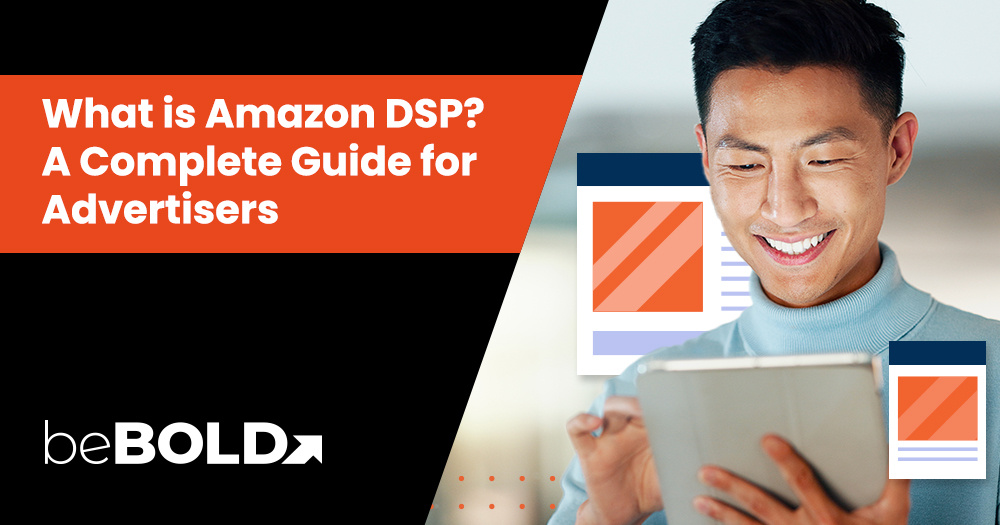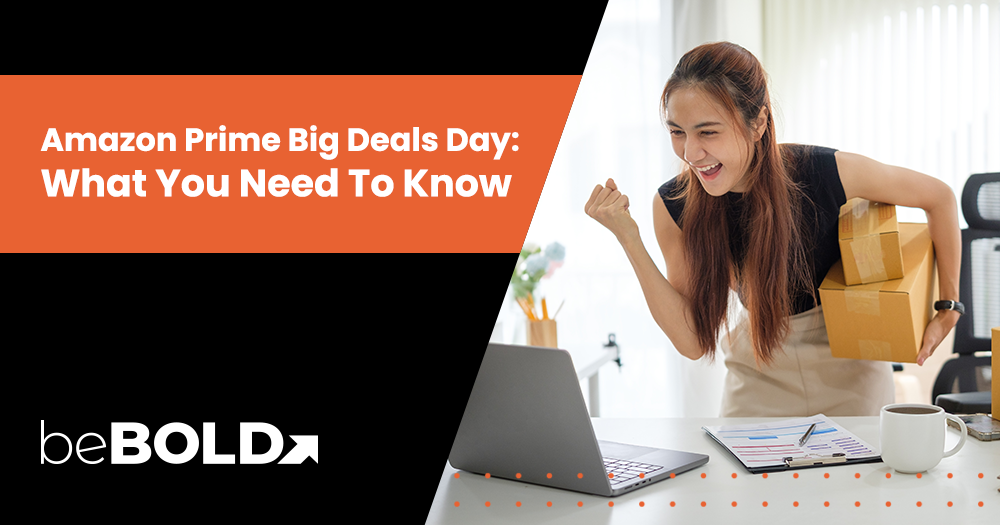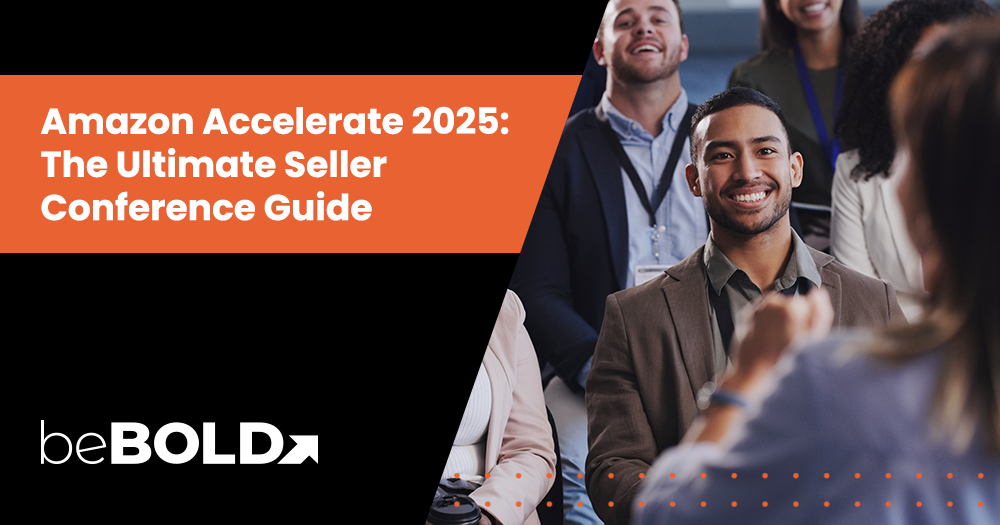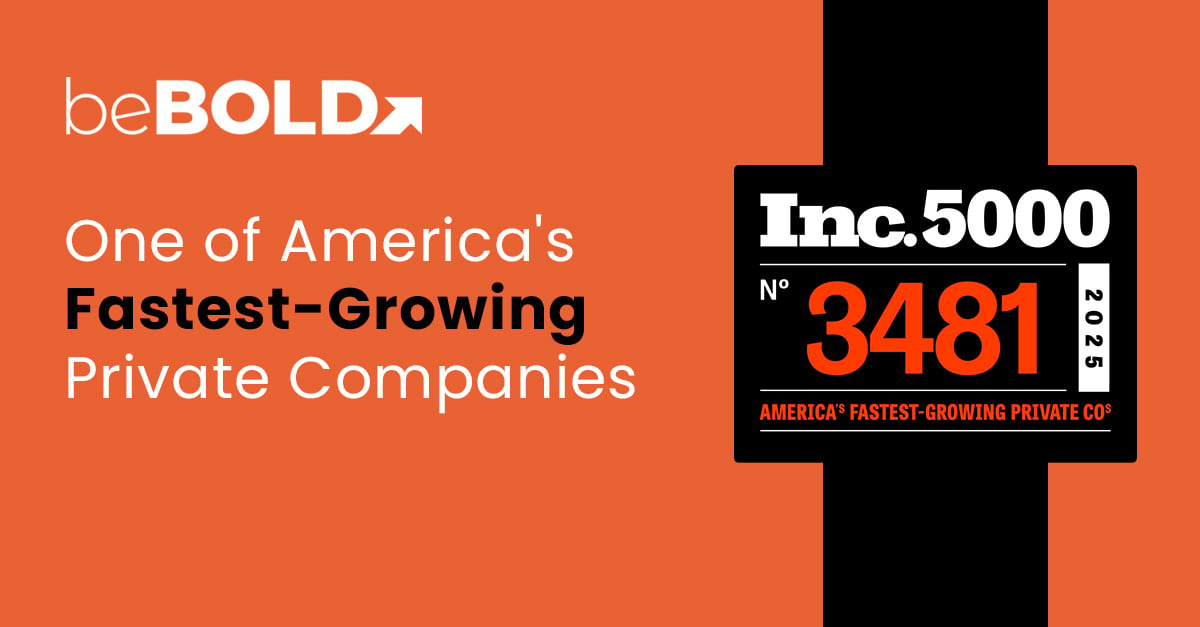Key Takeaways
- Amazon DSP is a programmatic advertising platform that uses Amazon’s shopper data to deliver display, video, and audio ads across Amazon and third-party sites.
- It offers advanced targeting and retargeting based on real customer behavior, making it ideal for both brand awareness and conversions 🎯.
- Advertisers can choose between Self-Serve (more control) and Managed-Service (expert execution), with the latter requiring a higher ad spend 💰.
- Unlike Sponsored Ads, DSP reaches users beyond Amazon.com, including on Fire TV, Twitch, and IMDb.
- BeBold Digital helps brands strategize, manage, and optimize DSP campaigns for maximum reach and ROI 🚀
Reaching the right audience at the right time is key to successful digital marketing, and Amazon DSP is a game-changer. This powerful platform lets advertisers leverage Amazon’s vast consumer data to deliver highly targeted ads across Amazon-owned and third-party sites. But how does it work, and why is it so effective? In this article, we’ll explore the unique advantages of Amazon DSP and how it can elevate your advertising strategy.
Understanding Amazon DSP (Demand-Side Platform)
Amazon DSP (Demand-Side Platform) is a programmatic advertising solution that allows brands to automate the purchase of display, video, and audio ads across Amazon properties and third-party platforms. Leveraging first-party shopper data, it enables precise audience targeting, enhancing engagement, conversions, and ROI through AI-driven optimizations and real-time bidding. With detailed Amazon DSP reporting, advertisers can analyze campaign performance, audience insights, and attribution metrics to fine-tune their strategies for maximum impact.
Key Statistics:
- Market Position: As of 2021, Amazon DSP accounted for 11.6% of net digital ad revenues in the U.S., marking a 55.5% increase from the previous year. This growth positioned Amazon DSP as the third-largest advertising platform, following Google and Meta.
- Cost-Per-Click (CPC): In 2022, the median CPC for ads sold via Amazon DSP in the U.S. was $4.25, up from $3.77 in 2021—a year-over-year increase of approximately 13%.
- Advertiser Adoption: Advertisers are increasingly investing in Amazon DSP. For instance, Tinuiti clients, including Etsy and Gap, experienced a 27% rise in DSP spending in 2024 compared to the previous year. Notably, DSP expenditure on Prime Video advertising surged by 255% during the same period.
- Advertising Reach: Amazon's Prime Video advertising has a global reach of approximately 200 million potential viewers each month, with significant audiences in the U.S. and UK.
These statistics underscore Amazon DSP's growing influence in the digital advertising landscape, offering advertisers advanced tools and expansive reach to effectively engage their target audiences.
How Amazon DSP Works?
Amazon DSP Ads enables advertisers to programmatically buy display, video, and audio ads across Amazon properties and third-party sites using real-time bidding (RTB) and Amazon’s first-party data.
Key Components:
- Real-Time Bidding (RTB): Automated auctions determine ad placements in milliseconds.
- Advanced Targeting: Uses behavioral, demographic, remarketing, and contextual targeting.
- Ad Inventory: Ads appear on Amazon-owned sites (Amazon.com, Fire TV, IMDb) and premium third-party sites.
- Ad Formats: Supports display, video, and audio ads.
- Optimization & Reporting: AI-driven adjustments, A/B testing, and detailed performance tracking maximize ROI.
Key Benefits of Using Amazon DSP
Here are the benefits of using Amazon DSP.
Advanced Targeting and Audience Segmentation
Amazon DSP leverages first-party data to help advertisers reach highly relevant audiences. Target users based on browsing behavior, past purchases, demographics, and lookalike audiences to maximize engagement.
Cross-Platform Advertising Reach
Extend your reach beyond Amazon.com to Fire TV, IMDb, Twitch, Alexa-enabled devices, and premium third-party websites and apps. This omnichannel approach ensures visibility across multiple digital touchpoints.
AI-Powered Optimization and Reporting
Amazon DSP uses machine learning to automate bidding, optimize ad placements, and improve performance. Real-time analytics and detailed reporting provide insights to refine campaigns and maximize return on ad spend (ROAS).
Sponsored product ads work better when used with Amazon DSP
According to research conducted by Perpetua, combining Sponsored Products ads with the Amazon DSP leads to significantly better performance. Perpetua’s analysis found that the conversion rate for Sponsored Products ads was 19% higher when run alongside the Amazon DSP compared to when they were used on their own. Additionally, the return on ad spend (ROAS) for Sponsored Products increased by 3% when paired with the Amazon DSP. These findings highlight the value of an integrated advertising strategy on Amazon.
Streaming TV (STV) ads and Amazon DSP drive a significant portion of mid- to long-term purchases.

Although part of Amazon's DSP, Streaming TV (STV) ads were analyzed separately to better understand the audience reached by these brand-focused, large-screen ads. Perpetua’s data shows 70% of STV purchases happened within 3–14 days of first interaction, compared to 33% for DSP (excluding STV) and just 9% for Sponsored Products. This highlights that STV and DSP are more effective at driving awareness and new-to-brand sales, making them strong tools for mid- to long-term demand
Streaming TV (STV) video ads attract a higher proportion of new-to-brand customers compared to other types of Amazon ads.

Perpetua conducted a study to better understand how advertisers can effectively reach new customers through Amazon's advertising ecosystem. Advertisers aiming to introduce shoppers to their brand and product portfolio often turn to the Amazon DSP to run Streaming TV (STV) video ads, also known as over-the-top (OTT) ads.
The research revealed that customers exposed to STV ads were more likely to be new-to-brand compared to those who saw only other types of Amazon ads. Specifically, 57% of customers influenced by an STV ad were new-to-brand, while only 45% of customers who did not see an STV ad fell into that category.
These findings suggest that leveraging STV ads through the Amazon DSP can be a more effective strategy for driving customer acquisition and expanding brand reach than relying solely on other Amazon ad formats.
Amazon DSP advertising delivers strong performance

The same study conducted by Perpetua found that advertising through the Amazon Demand-Side Platform (DSP) delivers highly competitive return on ad spend (ROAS). Specifically, Amazon DSP achieved a ROAS that was 43% higher than Sponsored Display, 9% higher than Sponsored Brands, and just 4% lower than Sponsored Products—highlighting the performance gap in the ongoing Amazon DSP vs Sponsored Display ad comparison.
For this analysis, Perpetua used the standard attribution models associated with each ad format: "last-click" attribution for Sponsored Products and "view-through" attribution for Amazon DSP. This approach ensured that each ad type was evaluated according to its typical performance metrics, offering a fair comparison across formats.
Amazon DSP vs Other Advertising Platforms
Amazon DSP stands out from other advertising platforms by leveraging Amazon’s first-party data and programmatic ad buying across Amazon-owned properties and third-party sites. Here’s how it compares to other major ad solutions:
Amazon DSP vs Sponsored Ads
- Ad Placement: Sponsored Ads appear only on Amazon search results and product pages, while Amazon DSP reaches audiences on and beyond Amazon.
- Targeting: Sponsored Ads target shoppers actively searching for products, whereas DSP offers broader audience segmentation, including behavioral and demographic targeting.
- Ad Formats: Sponsored Ads focus on keyword-driven placements, whereas DSP includes display, video, and audio ads.
- Best For: Sponsored Ads are ideal for immediate conversions, while DSP excels at brand awareness and retargeting.
Amazon DSP vs Sponsored Brands
- Ad Placement: Sponsored Brands appear on top of Amazon search results, product detail pages, and across relevant placements within Amazon. DSP ads extend across Amazon and third-party sites.
- Targeting: Sponsored Brands target high-intent keywords and branded search terms, while DSP targets based on shopping behavior, demographics, and interests.
- Ad Formats: Sponsored Brands include a customizable banner with your logo, headline, and up to three featured products. DSP supports dynamic display, video, and audio creatives.
- Best For: Sponsored Brands are ideal for increasing brand visibility within Amazon search, while DSP is better for building awareness and retargeting off-Amazon.
Amazon DSP vs Sponsored Display
- Ad Placement: Sponsored Display ads appear on Amazon product detail pages, customer review sections, and even in Amazon-owned marketing emails. DSP ads are placed both on Amazon and across external publisher sites.
- Targeting: Sponsored Display uses audience interest and product-based retargeting, while DSP offers advanced targeting, including lookalike audiences, in-market segments, and demographic filters.
- Ad Formats: Sponsored Display uses static product-focused creatives auto-generated by Amazon. DSP allows for customized display, video, and rich media formats.
- Best For: Sponsored Display is great for product remarketing and upselling, while DSP is better suited for full-funnel campaigns with more creative control and off-platform reach.
Amazon DSP vs Google Display Network (GDN)
- Data & Targeting: Amazon DSP uses Amazon’s exclusive first-party shopper data, while GDN relies on browsing behavior and third-party cookies.
- Ad Inventory: Amazon DSP places ads on Amazon properties (Amazon.com, Fire TV, IMDb) and select third-party sites, while GDN spans millions of websites and apps in Google’s network.
- Ad Formats: Both offer display and video ads, but Amazon DSP also includes audio ads on Amazon Music.
- Best For: Amazon DSP is better for retail and e-commerce brands leveraging Amazon’s data, while GDN is broader and better suited for general web traffic.
Amazon DSP vs Traditional Demand-Side Platforms (DSPs)
- Exclusive Amazon Inventory: Unlike traditional DSPs, Amazon DSP grants access to Amazon-owned media and premium publishers.
- First-Party Data: Amazon DSP benefits from deterministic first-party shopping data, whereas traditional DSPs rely on third-party data, which may be less accurate.
- AI & Machine Learning: Amazon DSP uses proprietary machine learning to optimize campaigns, while traditional DSPs may rely on external data providers.
- Best For: Amazon DSP is ideal for brands looking to target high-intent shoppers, while traditional DSPs offer broader programmatic advertising options across the open web.
Who Should Use Amazon DSP?
Amazon DSP is ideal for businesses looking to leverage Amazon’s data and programmatic advertising capabilities to reach targeted audiences. Here’s who can benefit the most:
Brands and Advertisers
- Ideal for businesses looking to increase brand awareness and engage high-intent audiences.
- Leverage Amazon’s first-party data to reach relevant shoppers across Amazon and third-party sites.
- Run cross-channel campaigns with display, video, and audio ads.
E-commerce Sellers
- Drive sales by retargeting shoppers who viewed products but didn’t purchase.
- Use behavioral targeting to reach potential customers based on shopping habits.
- Optimize ad spend with AI-driven bidding and performance insights.
Agencies and Media Buyers
- Manage large-scale programmatic campaigns with advanced audience segmentation.
- Automate ad buying and optimize performance with real-time bidding.
- Provide clients with access to Amazon’s exclusive inventory and data-driven insights.
Key Stats:
- Amazon DSP accounts for 11.6% of U.S. digital ad revenue, making it the third-largest ad platform.
- The median CPC for Amazon DSP ads is $4.25, up 13% year-over-year.
- DSP spending grew 27% in 2024, with Prime Video ad spend surging 255%.
- Amazon’s Prime Video ads reach 200 million viewers globally each month.
Amazon DSP vs Sponsored Ads
Here's a detailed comparison table outlining the eligibility requirements for Amazon DSP vs. Sponsored Ads (Sponsored Products, Sponsored Brands, and Sponsored Display):
|
Criteria |
Amazon DSP |
Sponsored Ads (Sponsored Products, Sponsored Brands, Sponsored Display) |
|
Seller/Advertiser Type |
Available to brands, agencies, and advertisers (including non-Amazon sellers) |
Only available to Amazon sellers and vendors |
|
Amazon Account Requirement |
Not required; advertisers do not need to sell on Amazon |
Required; must be a registered Amazon seller or vendor |
|
Amazon Brand Registry Requirement |
Not required |
Required for Sponsored Brands, optional for Sponsored Products and Sponsored Display |
|
Budget Requirement |
Minimum budget requirements vary (often $10,000+ per campaign) |
No minimum budget; advertisers can set their own bid and daily budgets |
|
Ad Targeting |
Audience-based targeting (demographics, interests, behavioral, lookalike audiences) |
Keyword, product, and audience targeting based on Amazon search and browsing behavior |
|
Access Type |
Requires approval and may need a managed-service agreement or access via Amazon DSP self-service partners |
Self-service; accessible to all eligible sellers via Amazon Advertising console |
|
Market Availability |
Available in select countries where Amazon DSP operates |
Available in most countries where Amazon Advertising is supported |
|
Ad Placement |
Both on and off Amazon (Amazon-owned sites, third-party websites, and apps) |
Only on Amazon’s marketplace and its affiliated properties |
|
Ad Format Types |
Display, video, and custom programmatic ads |
Sponsored Products (PPC ads on product pages and search results), Sponsored Brands (headline search ads), and Sponsored Display (retargeting ads) |
|
Cost Model |
CPM (Cost Per Mille – impressions-based pricing) |
CPC (Cost Per Click – pay only when users click the ad) |
Types of Amazon DSP Accounts

Amazon DSP offers two account models: Self-Serve DSP and Managed-Service DSP, each catering to different levels of advertiser involvement and expertise.
Self-Serve DSPs – Full Control Over Campaigns
- Ideal for brands and agencies with in-house programmatic expertise.
- Advertisers have full control over campaign setup, optimization, and reporting.
- Lower costs since there are no additional service fees from Amazon.
- Requires a minimum ad spend (varies by region and advertiser).
Managed-Service DSPs – Amazon’s Expert Management
- Best for advertisers who need Amazon’s team to handle campaign execution.
- Requires a higher minimum ad spend (typically $50,000+).
- Amazon’s experts handle targeting, bidding, and optimization for maximum performance.
- Ideal for brands new to DSP or those without in-house expertise.
Amazon DSP Ad Inventory and Placements
Amazon DSP offers premium ad placements across Amazon-owned properties and third-party websites, providing advertisers with broad reach and high-quality inventory.
Amazon-Owned Websites and Apps
- Ads appear on Amazon.com, Amazon Fresh, and Amazon-owned properties.
- Includes placements on Amazon mobile apps and Kindle.
Third-Party Websites via Amazon DSP
- Access to premium publishers and high-traffic sites through Amazon’s ad exchange.
- Ads are programmatically placed on websites and apps outside of Amazon’s ecosystem.
Fire TV, IMDb, and Twitch
- Fire TV: Display and video ads on streaming content.
- IMDb: Video and display ads on IMDb.com and IMDb TV.
- Twitch: Video and banner ads targeting Twitch’s gaming and live-streaming audience.
Amazon DSP ad types
There are four main ad types available to beauty brands through Amazon DSP: dynamic e-commerce ads, static ads, video ads, and over-the-top (OTT) video advertisements.
Dynamic eCommerce ads
Dynamic eCommerce ads are a type of ad that allows beauty brands to showcase their products more interactively. With dynamic eCommerce ads, beauty brands can include product images, pricing information, and even customer reviews. These types of ads are designed to help beauty brands increase conversion rates by providing potential customers with more information about the products they're interested in.
Static ads
Static ads are a type of ad that doesn't include any animation or interactivity. These ads are typically less expensive than dynamic e-commerce ads and can be an effective way to reach potential customers who are not yet ready
Video ads
Video ads are a type of ad that allows beauty brands to showcase their products in a more engaging way. Video advertisements can include product images, customer reviews, and even short videos. These types of ads are designed to help beauty brands increase conversion rates by providing potential customers with more information about the products they're interested in.
Over-The-Top (OTT) video ads
Over-The-TOP (OTT) video ads are a type of ad that allows beauty brands to reach potential customers on connected TV sources, like the Amazon Fire TV Stick. OTT, or streaming TV, refers to any type of streaming media content delivered over the Internet.
It includes subscription-based streaming services where consumers can access content on-demand without having to go through a traditional satellite or cable provider. Viewers can watch OTT content across a range of devices such as mobile phones, gaming consoles, and tablets, but the majority of viewing occurs on connected TVs (CTV).
OTT video ads are non-skippable and full-screen, making them a great way to grab attention. However, keep in mind that these types of ads are not clickable, so they should be used as part of a broader marketing strategy.
When it comes to using the Amazon DSP effectively, there is no one-size-fits-all approach. Every beauty brand is different, and each will have its own unique goals and objectives. However, by following the tips above, you can be sure that you're using the Amazon DSP in the most effective way
Amazon DSP Targeting Capabilities
Amazon DSP provides advanced targeting options, leveraging Amazon’s first-party shopper data to reach the right audience at the right time.
Audience Targeting – Amazon’s First-Party Shopper Insights
- Uses Amazon’s vast shopping and browsing data for precise audience segmentation.
- Targets users based on demographics, purchase history, and shopping behavior.
- Includes lookalike audiences to expand reach beyond existing customers.
Behavioral and Interest Targeting – Reaching Users Based on Past Behavior
- Targets users based on past searches, product views, and purchases.
- Uses interest-based segments to engage shoppers considering specific categories.
- Helps advertisers connect with potential customers before they make a purchase decision.
Remarketing Strategies – How Amazon DSP Helps with Retargeting
- Re-engages shoppers who viewed a product but didn’t purchase.
- Delivers personalized ads to past website visitors or Amazon shoppers.
- Uses dynamic e-commerce ads to show relevant products based on user behavior.
Pricing and Budget Considerations for Amazon DSP
Amazon DSP operates on a Cost-per-Thousand (CPM) model, meaning advertisers pay for every 1,000 impressions rather than clicks. Understanding the cost structure helps optimize spending for better performance.
Minimum Investment Requirements
- Managed-Service DSP typically requires a minimum ad spend of $35,000–$50,000 (varies by region).
- Self-Serve DSP has no fixed minimum but requires expertise in campaign management.
Cost-per-Thousand (CPM) Model
- Pricing is based on an auction system where bids determine ad placements.
- CPM rates vary depending on audience targeting, competition, and inventory quality.
- Premium placements (e.g., Fire TV, Twitch, IMDb) may have higher CPMs.
Budget Allocation Tips
- Start with Retargeting: Focus on high-intent shoppers for better conversion rates.
- Diversify Across Placements: Balance spend between Amazon-owned properties and third-party sites.
- Optimize Based on Performance: Use AI-driven bidding and real-time reporting to adjust budgets efficiently.
- Test and Scale: Begin with smaller test budgets before scaling successful strategies.
Measuring Amazon DSP Performance

Tracking performance metrics is crucial for optimizing Amazon DSP campaigns and ensuring a strong return on investment (ROI).
Amazon Marketing Cloud Integration – Advanced Insights
- Provides in-depth, privacy-safe analytics on customer journeys.
- Helps analyze cross-channel performance beyond standard reporting.
- Enables custom audience segmentation and attribution modeling.
Key Metrics: ROAS, Impressions, Clicks – Tracking Success
- Return on Ad Spend (ROAS): Measures revenue generated per dollar spent.
- Impressions: Tracks how many times an ad is displayed.
- Clicks & Click-Through Rate (CTR): Indicates engagement levels.
- Viewability & Completion Rate: Important for video ad effectiveness.
A/B Testing for DSP Optimization – Best Practices
- Test different ad creatives, audiences, and placements to find the most effective combination.
- Compare bidding strategies (manual vs. automated) for cost efficiency.
- Use incrementality testing to measure the true impact of DSP campaigns.
How to Get Started with Amazon DSP
Amazon DSP allows advertisers to run programmatic display, video, and audio ads across Amazon’s ecosystem and beyond. Here’s how to get started:
Signing Up for Amazon DSP
- Visit the Amazon Advertising website and request access to Amazon DSP.
- Choose between Self-Serve (if you manage campaigns in-house) or Managed-Service (if Amazon’s team runs the campaigns for you).
- Meet the minimum budget requirements ($35,000+ for Managed-Service DSP).
Choosing Between Self-Serve and Managed DSP – Pros and Cons
|
Feature |
Self-Serve DSP |
Managed-Service DSP |
|
Control |
Full control over campaigns |
Amazon experts manage everything |
|
Cost |
Lower fees, but requires expertise |
Higher minimum spend (~$35K+) |
|
Optimization |
Advertiser manages bidding & targeting |
Amazon optimizes for best performance |
|
Best For |
Experienced advertisers & agencies |
Brands new to DSP or without in-house expertise |
Setting Up Your First Campaign
- Define Objectives – Choose between awareness, consideration, or conversion goals.
- Select Audience Targeting – Use behavioral, demographic, or remarketing strategies.
- Choose Ad Placements – Select Amazon-owned properties, third-party websites, or both.
- Set Budget & Bidding Strategy – Allocate spend based on goals and optimize with AI-powered bidding.
- Launch & Monitor – Track key metrics (ROAS, CTR, impressions) and adjust based on performance.
Challenges and Limitations of Amazon DSP
While Amazon DSP offers powerful advertising capabilities, there are some challenges advertisers should consider.
High Minimum Investment – Barrier for Small Sellers
- Managed-Service DSP requires a minimum ad spend of $35,000–$50,000, making it less accessible for smaller businesses.
- Self-Serve DSP allows more flexibility, but advertisers need expertise in programmatic advertising.
- Solution: Start with Amazon Sponsored Ads or partner with an agency that has DSP access.
Limited Direct Control for Managed DSP – Pros and Cons of Amazon’s Oversight
- Amazon’s team manages campaign setup, optimization, and reporting in the Managed-Service model.
- While this ensures expert execution, it limits advertisers’ ability to make real-time changes.
- Solution: Opt for Self-Serve DSP if direct control is a priority.
Data Complexity and Learning Curve – Understanding the Analytics
- Amazon DSP provides detailed reporting, but interpreting impressions, ROAS, viewability, and attribution can be overwhelming.
- Amazon Marketing Cloud offers advanced insights, but requires SQL knowledge for deep data analysis.
- Solution: Use Amazon’s built-in reports for simplified tracking or work with a DSP-experienced analyst.
How can Beauty Brands use Amazon DSP?
Amazon Demand Side Platform (DSP) is a tool that allows beauty brands to create audiences based on specific shopper behavior. If you have efficiency goals, using retargeting can capture consumers who have viewed your or a competitor's items on Amazon but have not made a purchase.
This stimulates bottom-of-the-funnel conversions while still drawing in a fair amount of new-to-brand consumers.
If you have scalability goals, like increasing top-line sales, DSP has tools that allow for the highest-funnel targeting within the Amazon ecosystem.
Audiences based on shopping patterns, lifestyle behaviors, and/or demographics can increase impressions and views of your product detail pages by targeting larger, broader audiences.
This kind of targeting, while it may perform with a low ROAS, can stimulate organic sales and lower search CPCs by increasing your relevance through views of your product detail pages.
Pros and Cons of Amazon DSP for Beauty Brands
| Pros |
Cons |
|---|---|
|
🎯 Wider Audience Reach Reach shoppers on and off Amazon using first-party data. |
🧩 Complex Setup Requires platform knowledge to manage campaigns effectively. |
|
🧬 Laser-Targeted Ads Target by behavior, interests, and demographics. |
💸 Risk of Overspending Poor monitoring can lead to budget overrun. |
|
💡 High Ad Relevance Ads reach those most likely to buy your product. |
🕵️ Needs Ongoing Optimization Without tuning, performance can drop. |
| 💰 Cost-Effective Model Pay only when users engage with your ads. |
|
Working with an Amazon DSP Agency
Partnering with an experienced Amazon DSP agency can streamline campaign management and maximize ad performance.
Benefits of Hiring an Amazon DSP Agency
- Expert Strategy & Execution: Agencies bring in-depth knowledge of audience targeting, bidding strategies, and optimization.
- Efficiency & Cost Savings: Avoid trial-and-error spending by leveraging proven campaign tactics.
- Access to Self-Serve DSP: Agencies with Amazon DSP access can help brands bypass the high Managed-Service minimum spend.
- Comprehensive Reporting & Insights: Agencies analyze performance metrics and provide data-driven recommendations.
How BeBold Digital Can Help with Amazon DSP
At BeBold Digital, we specialize in Amazon DSP management, helping brands maximize their ad spend with strategic planning and data-driven execution. Our services include:
- Custom DSP Strategies: Tailored campaigns to align with your brand goals.
- Advanced Audience Targeting: Leveraging Amazon’s first-party data for precision marketing.
- Full-Service Campaign Management: From setup to optimization and reporting.
Get Started Today! Contact BeBold Digital for a free consultation and discover how Amazon DSP can accelerate your brand’s growth.
Conclusion: Is Amazon’s DSP worth it?
Amazon DSP offers powerful, data-driven advertising with precise targeting, broad reach, and efficient optimization. Beyond boosting sales and ROI, it helps brands understand their audience, strengthen their presence, and build lasting customer relationships—making it a smart investment for businesses embracing programmatic advertising.
Get a Free Amazon DSP Consultation with BeBold Digital
Frequently Asked Questions
What does a DSP do at Amazon?
A Demand-Side Platform (DSP) at Amazon, known as Amazon DSP, automates the process of purchasing digital ad spaces based on real-time bidding. It allows advertisers to target ads efficiently across various channels and devices using Amazon's vast consumer data, including Mobile AAP inventory.
How much money do you need to start a DSP for Amazon?
For the managed-service option of Amazon DSP, usually, a minimum spend of $50,000 USD is required but it may vary per country. However, there are no management fees for self-service customers who choose to manage their own campaigns.
How often is payment made in the Amazon DSP program?
The payment schedules in the Amazon DSP program can vary depending on the terms set out in your contract. Usual practices could be monthly or bi-weekly payments depending on campaign performance and other specific factors.
How does Amazon DSP differ from Sponsored Ads?
Amazon DSP uses programmatic ads across Amazon and third-party sites for brand awareness and retargeting, while Sponsored Ads are PPC-based and appear in Amazon search results to drive direct sales.
Can small businesses use Amazon DSP?
Amazon DSP has a high minimum spend ($35,000+ for Managed-Service), making it less accessible for small businesses. However, they can use Self-Serve DSP through agencies or start with Sponsored Ads for a lower-budget alternative.
What industries benefit the most from Amazon DSP?
E-commerce, CPG, electronics, automotive, entertainment, and finance benefit most, leveraging Amazon’s first-party data for precise targeting and cross-channel reach.
What is the return on investment (ROI) for Amazon DSP?
ROI varies by industry and campaign strategy, but Amazon DSP often delivers strong ROAS through precise targeting, retargeting, and data-driven optimizations. Brands typically see higher engagement and conversions compared to traditional display ads.
Want to accelerate your business growth using Amazon DSP? Contact us now to get started.









Comments